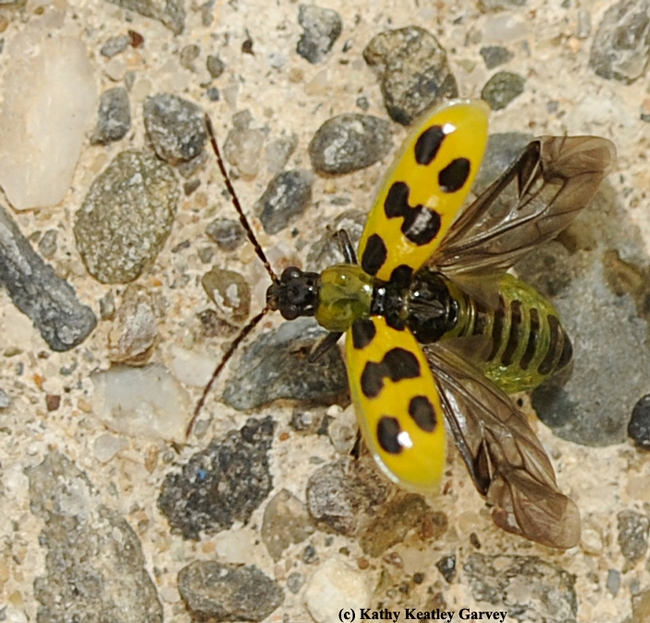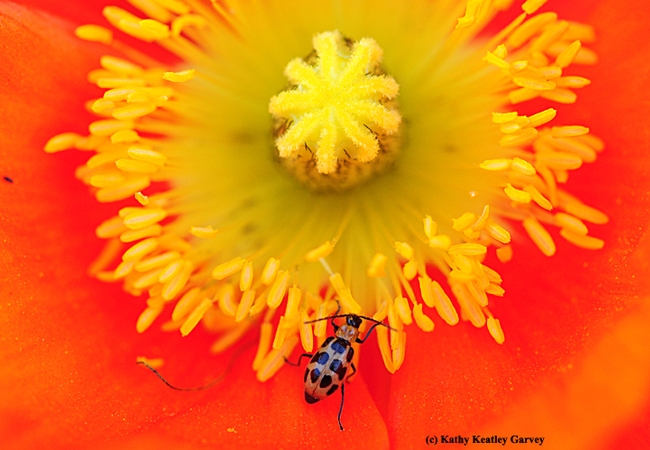
How many times have you heard that?
Often it is not the beneficial lady beetle--commonly referred to as a ladybug--but that dratted pest, the spotted cucumber beetle.
In a case last week, it was the dratted spotted cucumber beetle, or more specifically, the western spotted cucumber beetle, Diabrotica undecimpunctata undecimpunctata, being "diabotical" on an Iceland poppy.
Lady beetles, the good guys and girls, can be many other colors besides red with black spots. They can also be with or without spots or stripes. They're the blue ribbon winners when it comes to devouring aphids and other soft-bodied insects.
The spotted cucumber beetle, however, is a pest of many of our agricultural crops, including the cucurbits family, Cucurbitaceae, which includes cucumbers, squash and zucchini. You'll also find these little diabolical munchkins just about everywhere.
"Western striped cucumber beetle larvae feed exclusively on cucurbit roots, whereas western spotted cucumber beetle larvae feed on a wide variety of plants including grasses, corn, legumes, and cucurbits," according to an entry in the UC Statewide Integrated Pest Management (UC IPM) Program's Pest Management Guidelines.
So, the next time you're slicing a melon, remember what UC IPM says: "Cucumber beetles are serious pests of smooth-skinned cucurbits, especially melon varieties such as honeydew, crenshaw, and casaba. While the adults prefer tender, succulent portions of plants, including the flowers and leaves, which they may destroy with their feeding, it is the damage to the surface of the melon that reduces marketable yield. When temperatures are high, adults especially feed on the undersides of young melons, scarring them. After the skin hardens, melons are much less subject to attack. Scarring in the crown of the plant is also typical of adult damage. Feeding on stems of young plants, followed by sustained winds, may result in severe stand reductions making replanting necessary. In some situations, larvae may cause serious injury by feeding on roots, and young plants can be killed. Cucumber beetles also spread squash mosaic virus."
A cute little ladybug? No.
Pretty? Well, it is quite photogenic.
Attached Images:
